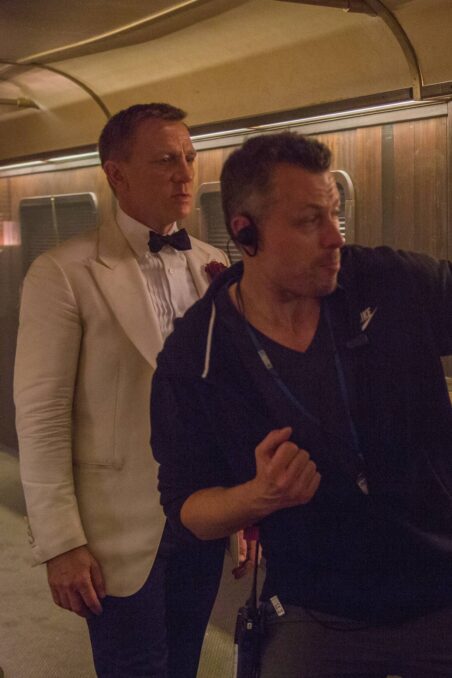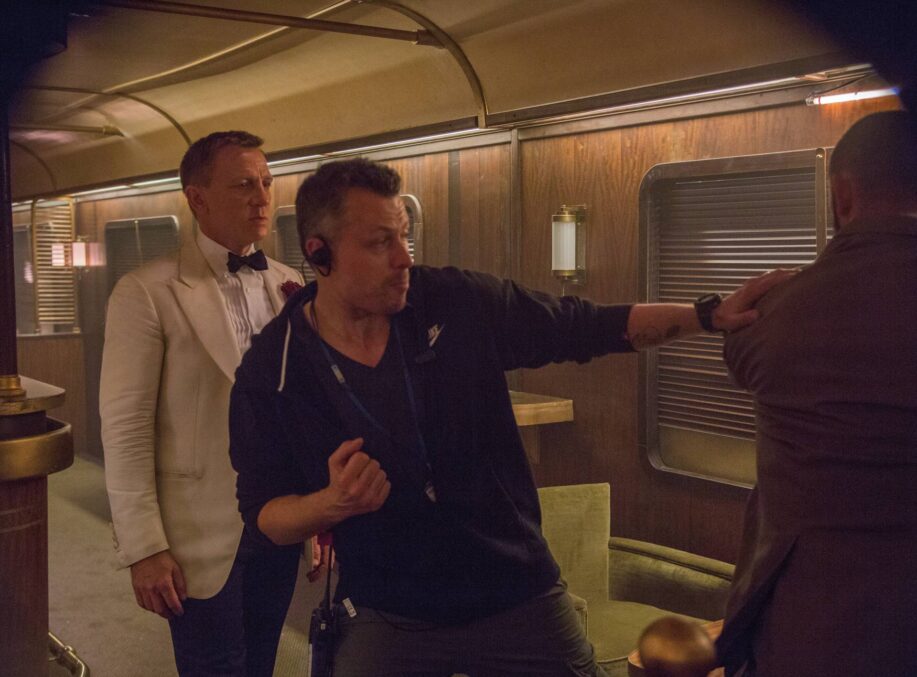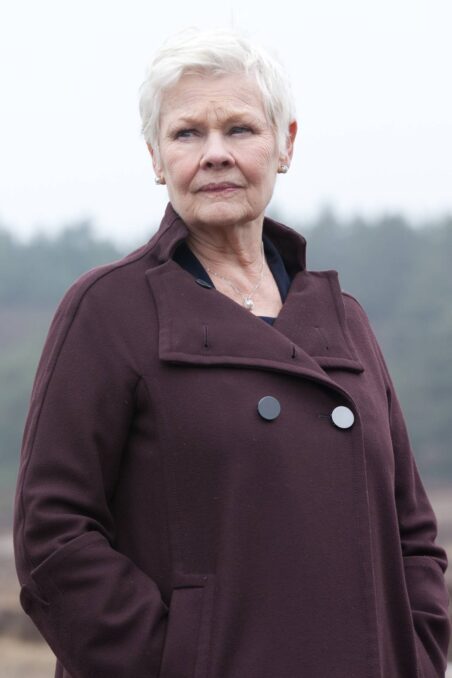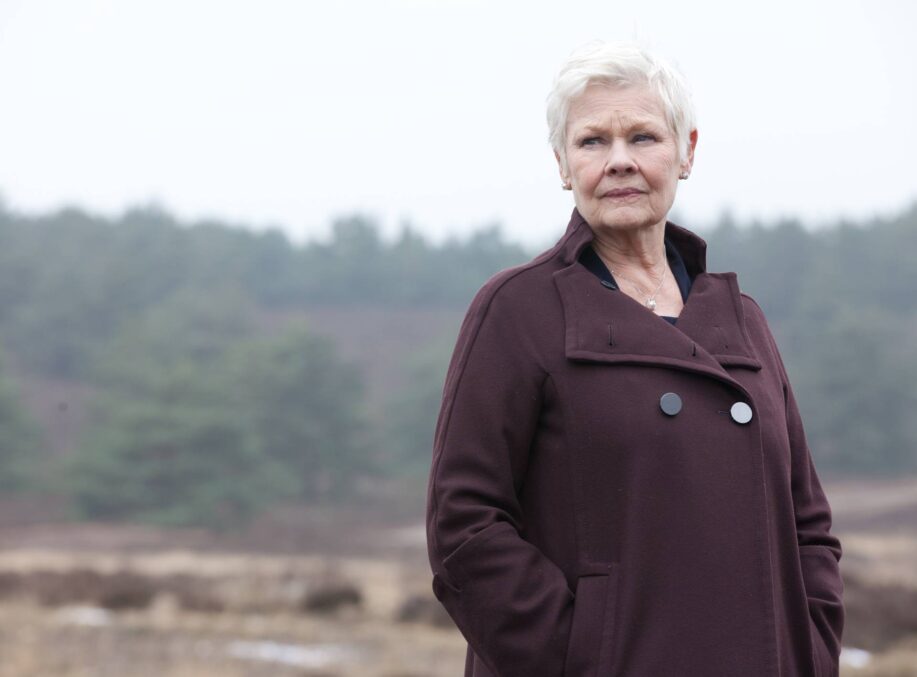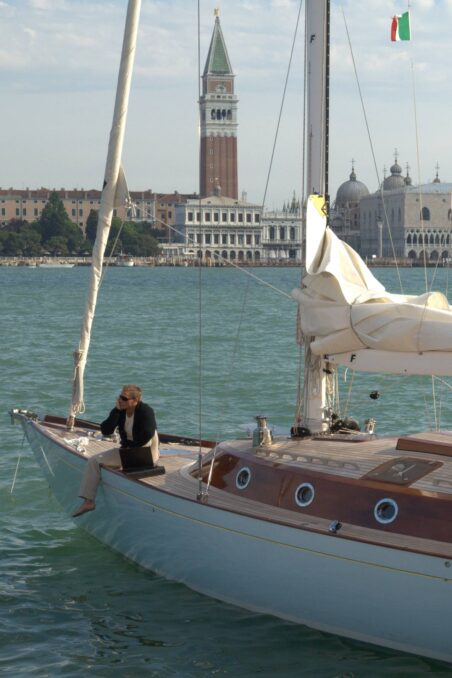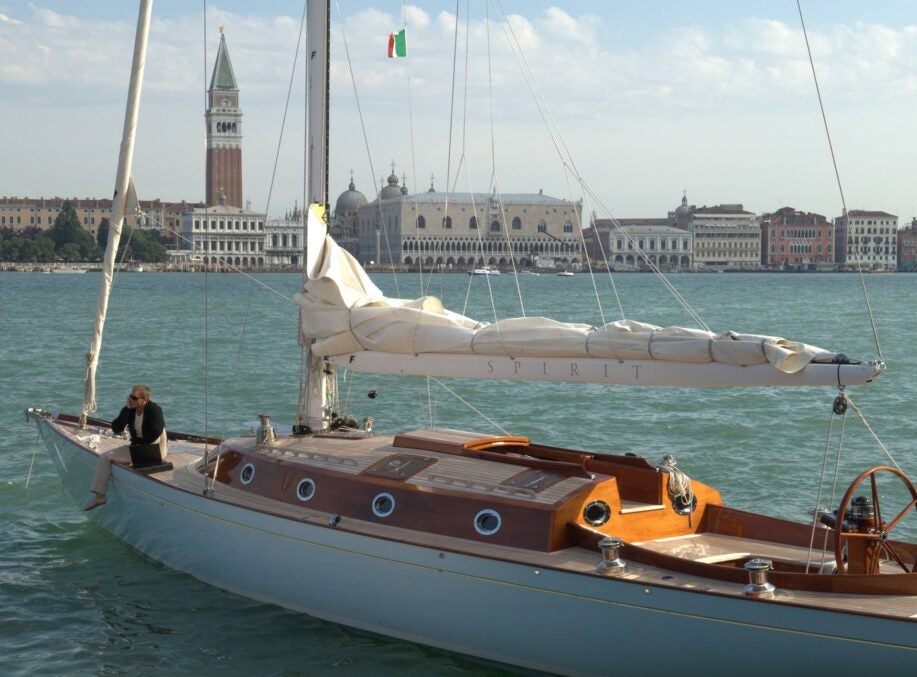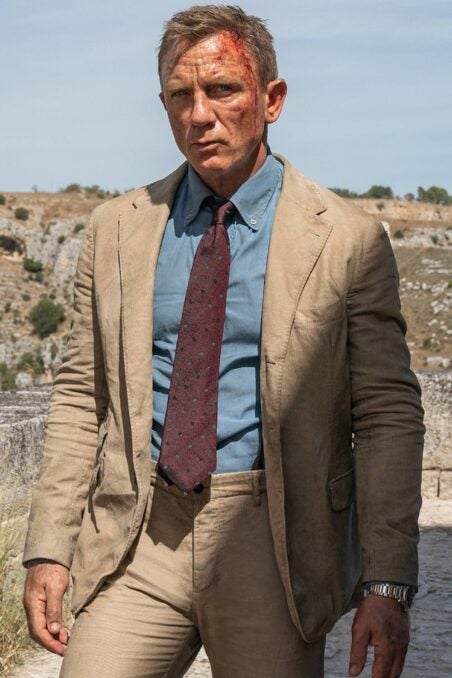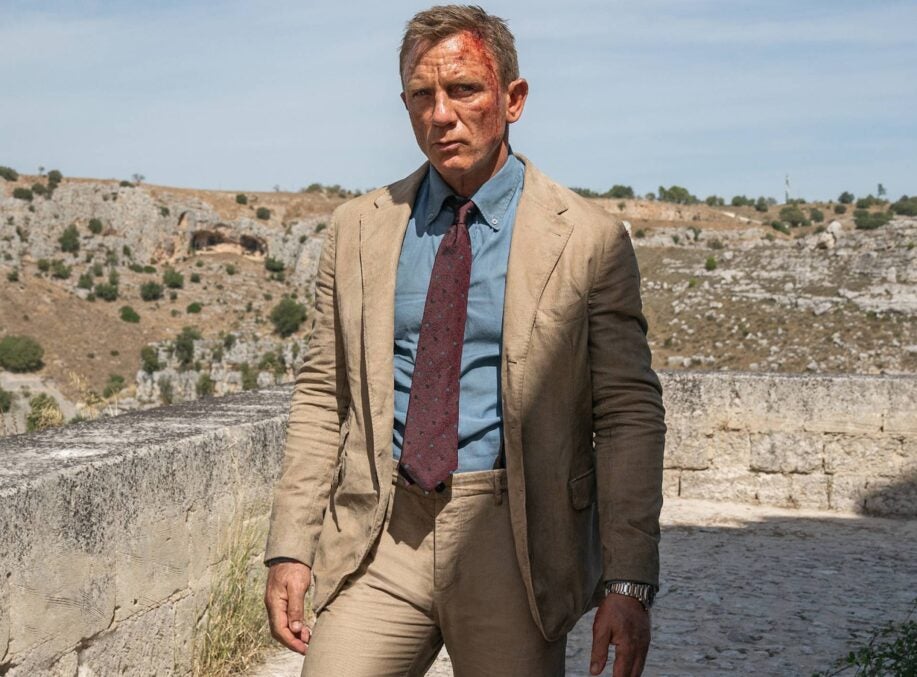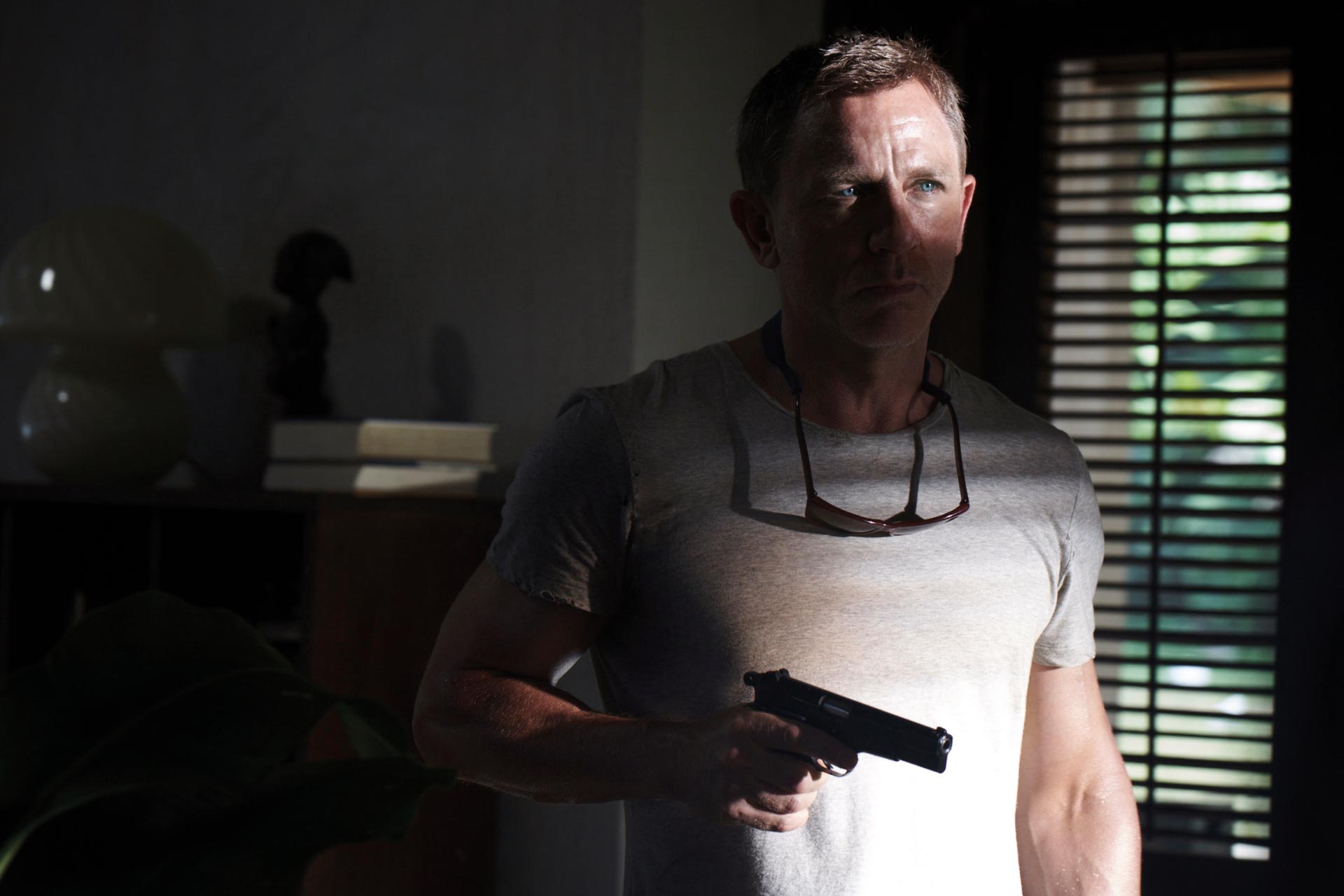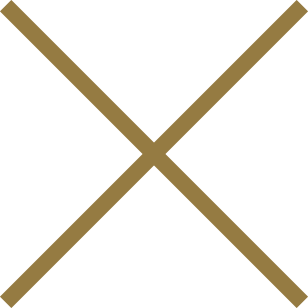The Evolution of Visual Effects on 007
Visual Effects Supervisor Mara Bryan on working on five James Bond movies over three different decades
Mara Bryan started out her career in computer graphics for commercials and TV before moving into the film industry. In 2022, Mara was nominated for Outstanding Visual Effects in a Photoreal Feature at the VES Awards for her work on No Time To Die.
Here, Mara talks about the evolution of visual effects used across four 007 movies, from pioneering CGI in GoldenEye, sleepless nights on Die Another Day, CG tunnels in The World Is Not Enough, and creating Bond’s final moments on No Time To Die
Your first James Bond credit was Visual Effects Coordinator on GoldenEye. You worked with Pierce Brosnan on all four of his 007 adventures. What are your memories of him?
I did get to know Pierce quite well, because when the actors are hanging on a cable from a helicopter in front of a green screen, you do tend to get chatting. I remember on GoldenEye, Pierce was quite nervous. There were a lot of us that were newbies on GoldenEye. It was Pierce’s first one.
 GoldenEye was the first 007 film to feature CGI. How was that?
GoldenEye was the first 007 film to feature CGI. How was that?
I was visual effects. There was nobody else. Previously, visual effects on the Bond films had all been the model unit. Derek Meddings was the Visual Effects Supervisor but he was far removed from the digital world. Everything was done practically. So, I started with a budget of something like £40,000 for a few optical effects and I had to fight incrementally for the budget to do around 150-160 shots digitally.
 What were the biggest challenges?
What were the biggest challenges?
Shooting Bond going off the edge of the cliff in the Pilatus PC-6. We could do it a lot better now nearly 30 years later. Also, the sequence where Bond’s hanging from the satellite dish at Arecibo. That was difficult because there was so much of it.
 On Tomorrow Never Dies, you were the Visual Effects Supervisor. What did that entail?
On Tomorrow Never Dies, you were the Visual Effects Supervisor. What did that entail?
By this time, the industry was growing up and I actually had a team. There were lots of big visual effects sequences, three times as many as there had been on GoldenEye. We made the decision quite early on to play all the screen graphics out live, not to add them in later. I had a graphic designer create a logo for the Carver Media Group Network and we built this whole title sequence that we could use in the background. We played them live in case there were script changes, or we needed to roll back to a certain place. It’s exhausting just thinking about it.
 What were the set pieces you were involved with?
What were the set pieces you were involved with?
The interior of the stealth ship, which was all green screen. We worked on Bond (Pierce Brosnan) and Wai Lin (Michelle Yeoh) abseiling down the front of the building and ripping the banner. Also, the helicopter going through the street in Vietnam was a special effects helicopter on a track but it had no rotors. So, we removed all the rig and put the rotors on afterwards. There was the whole underwater sequence with the submarine, a lot of which was real. I also remember we did CG [computer generated] MiG fighter jets.
 On The World Is Not Enough, you were working with Michael Apted, a director who didn’t have any visual effects experience. How was that?
On The World Is Not Enough, you were working with Michael Apted, a director who didn’t have any visual effects experience. How was that?
I remember Michael sitting us all down in a Heads of Department meeting. There was Vic Armstrong, who was second unit director, and Peter Lamont, the production designer. Everybody was there. Michael said, “Well, you all know what you’re doing. You’ve all done this before so I’m just going to let you get on with it and I’ll direct the drama.” That’s pretty much what he did. He was very trusting. There was the whole tunnel sequence with Bond trying to disarm the missile in the pipeline. That was a biggie because that was an entirely CG tunnel just shot with moving lights on a rig.
Was The World Is Not Enough the first time holographic images were used in feature films?
Actually, sorry to disillusion anyone, but this was not a true holographic image. We simulated one, based on researched reference and imagery. However, it was one of the first uses of “visual effects volumetric rendering”, which simply means it was a technique for creating 3 dimensional objects with visible volume that was still somewhat in the R & D stage.
 How did you create the parahawks that attack Bond and Christmas Jones in Azerbaijan?
How did you create the parahawks that attack Bond and Christmas Jones in Azerbaijan?
There were CG versions of the parahawks. I remember there’s photos of me up in Chamonix taking lighting reference at certain times of the day with my watch in shot so we knew how to light for CG paragliders. We were way up the top of this mountain. It was dead silent. We had to go up there in these strange army vehicles because it was very rough terrain and very snowy. It was exquisitely beautiful.
You’ve said that the effects on Die Another Day kept you awake at night?
They did, especially the surfing and Icarus sequences. I’m not sure we ever got them to work and there were lots of reasons for that. I think we were too ambitious. I’m not sure we approached the concept of kite surfing in the right way, especially given the limitations of the technology at the time.
Was this the first time digital water was ever used in a feature film?
For Die Another Day, this was not the first time digital water had been used in a feature film, as I had used it previously, on a much smaller scale, on another film. But digital water simulations were still extremely new, and the software to create them was very approximate, so the creation of water involved writing computer code to create the effects. This involved specialists who had specific and expert knowledge of computer simulations. The success, or lack thereof, of visual effects shots often does not lie in the technical execution of the FX, but in the conceptual design of how they are deployed. And in this regard, I think the FX technology was the more successful.
 What are you proud of on Die Another Day?
What are you proud of on Die Another Day?
We set the ice palace into the landscape and I think that worked well. I thought the invisible Aston Martin came off smartly. Whether you like the idea of it or not is another matter but I thought we actually pulled that off pretty well. It really took some thinking about and research into how to make it believable that a car could be invisible. We went into military technology and had LED screens along the side of vehicles that project the image that’s on the opposite side of the vehicle so that you have adaptive camouflage. That was the basic concept behind it.
 You came back to the Bond family with No Time To Die. How many digital effects shots were there?
You came back to the Bond family with No Time To Die. How many digital effects shots were there?
No Time To Die had 1486 VFX shots. Obviously, the car sequence in Matera was a big practical effects number but it was big on digital effects as well. There were CG versions of all the cars and those little bombs that came out. We also added tyre tracks everywhere and painted the crew out. There was a pod driver on the top of the Aston Martin, so whenever it was a stunt car, we had to remove the stunt driver. The trawler sequence was a biggie. To sink the trawler, Chris Corbould made a huge rotating special effects rig in a tank but all the underwater stuff was digital.
 How did you approach the destruction of Safin’s Island?
How did you approach the destruction of Safin’s Island?
Most of Poison Island was digital. The visual effects team had been out and shot reference photography in the Faro Islands. The background was largely matte painting, because we wanted the island on which Madeleine Swann (Léa Seydoux) was on to be a certain distance away. We wanted the skies to look a certain way. So just getting it to look 100% convincing was tough.
It’s also the locale where Bond dies. Was that an emotional thing to do?
Yes, it was. Charlie Noble (VFX supervisor) dines out on the fact that his mother still hasn’t forgiven him for killing Bond. Of course, it was top secret and we managed to keep it that way for — crikey! — two and a half years.
How would you sum up the VFX philosophy on Bond?
Don’t do anything with visual effects unless you absolutely have to. They do all those fabulous enormous stunts, special effects and explosions for real, and they will only come to visual effects when they absolutely cannot sink a trawler with Bond swimming up the side of it. So, they’re very ambitious with what they attempt practically and long may it continue. It’s a matter of pride for the special effects team.

